To calculate proper hop additions, start by understanding the role of alpha acids in bitterness. Use the IBU formula: IBUs = U% * (ALPHA% * W_OZ * 0.7489) / (V_GAL). Adjust the utilization percentage based on boil time and consider adding bittering hops early, with flavoring hops added 15-30 minutes before the end. For aroma, use late additions within the last 10 minutes. By mastering these calculations, you’ll create well-balanced brews. More techniques await you ahead.
At a Glance
- Calculate IBUs using the formula: IBUs = U% * (ALPHA% * W_OZ * 0.7489) / (V_GAL) for accurate bitterness assessment.
- Adjust utilization percentages based on boil time to optimize hop extraction and bitterness levels.
- Consider the timing of hop additions: early for bitterness, mid-boil for flavor, and late for aroma retention.
- Experiment with different hop varieties and their alpha acid percentages to enhance overall beer flavor.
- Monitor wort gravity, as it affects hop utilization and should be factored into your calculations.
Understanding Hop Utilization
Helpful Hints:
- Maintain boil times.
- Monitor wort gravity.
- Use precise measurements.
- Consider the impact of hop additions timing on bitterness, flavor, and aroma during the brewing process.
Importance of Alpha Acids
Alpha acids play an essential role in the brewing process, serving as the primary source of bitterness in beer. These compounds influence the final product’s bitterness, measured in International Bitterness Units (IBUs).
Different hop varieties contain varying alpha acid percentages, so selecting the right bittering hops is vital for achieving desired bitterness levels. Understanding how alpha acids undergo isomerization during the boil allows you to optimize hop additions, balancing bitterness with flavor and aroma. Additionally, choosing the right yeast strains can enhance the overall hop expression and flavor profile of your brew.
By mastering this knowledge, you can create innovative brews that cater to diverse palates, enhancing your brewing skills and elevating your craft.
Helpful Hints:
- Experiment with different hop varieties.
- Monitor boil times for effective isomerization.
Calculating International Bitterness Units (IBU)
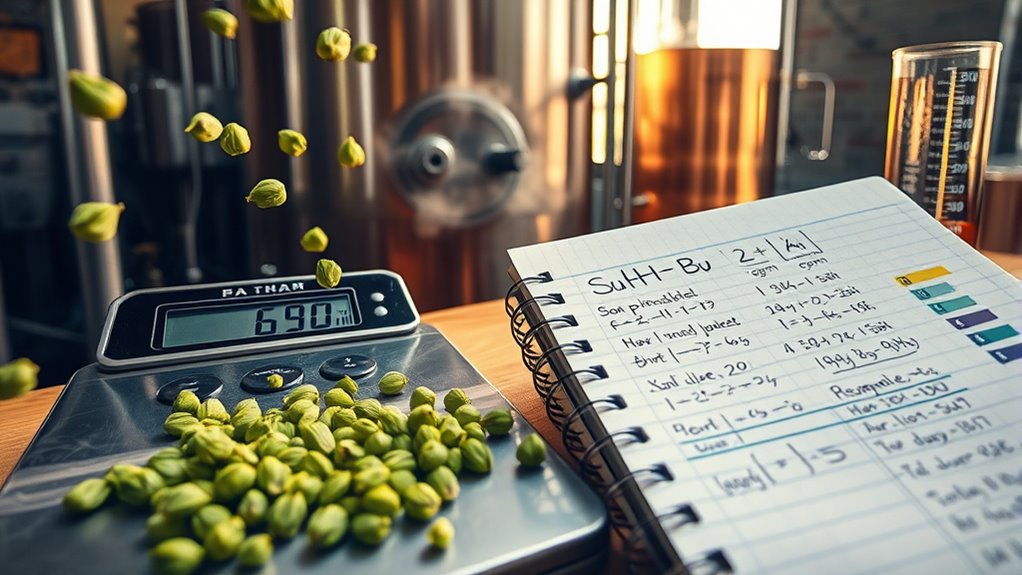
- To calculate International Bitterness Units (IBU), use the formula: IBUs = U% * (ALPHA% * W_OZ * 0.7489) / (V_GAL).
- Adjust utilization percentages based on boil time; longer boils yield higher hop bitterness.
- Aim for target IBUs of 30-40 for balanced American ales, while higher gravity beers might need 50+ IBUs.
- For multiple hop additions, calculate each hop’s IBU contribution separately, then sum them.
- Remember, while lab analysis provides accurate measurements, you can estimate IBUs using these calculations tailored to your brewing conditions.
Different Types of Hop Additions
When you’re brewing beer, understanding the different types of hop additions is essential for achieving your desired flavor profile. You’ll encounter bittering hops, added early in the boil to establish bitterness.
Flavoring and aroma hops enhance your brew’s complexity, with late addition hops introduced in the final 10 minutes, focusing on hop aroma without significant bitterness.
Dry hops, added post-fermentation, amplify aroma without altering bitterness levels, perfect for hop-forward styles like IPAs. Incorporating citrus hops like Citra can further elevate your IPA with vibrant fruit flavors.
Crafting a precise hop schedule, considering hop variety, is vital for balancing these elements effectively.
Helpful Hints:
- Experiment with different hop varieties.
- Adjust timing for desired effects.
Timing of Hop Additions
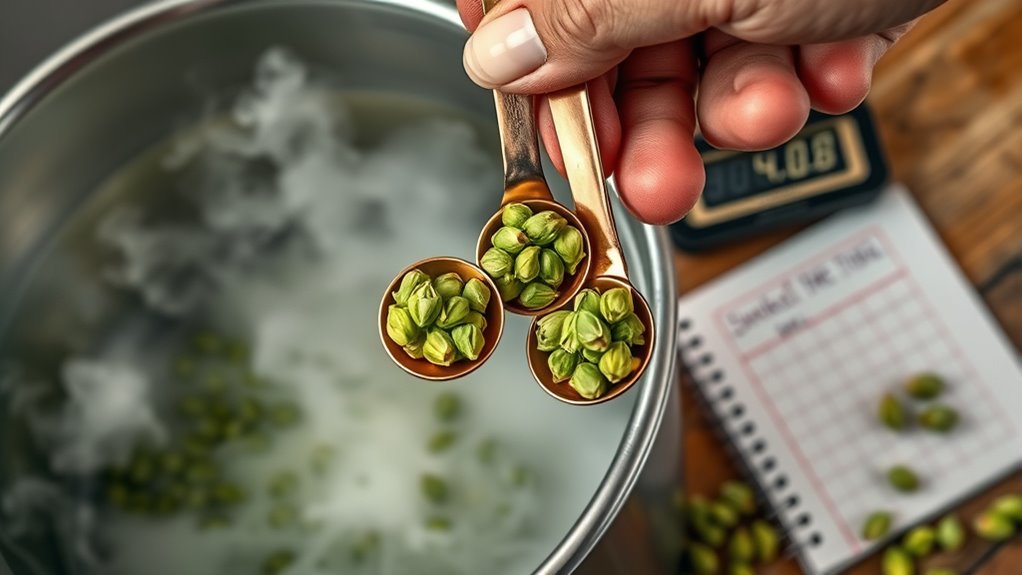
Timing hop additions correctly is essential for achieving the desired flavor and aroma in your beer.
Start with boil hops, adding them at the beginning for bitterness. For flavoring hops, add them 15 to 30 minutes before the boil ends. Late hop additions within the last 10 minutes maximize aroma retention, as these hops experience less isomerization. Additionally, consider that dry hopping during secondary fermentation can enhance hop aroma and flavor without increasing bitterness.
Consider using the first wort hop method for a smoother bitterness. Also, remember that wort gravity impacts hop utilization; lower gravity means higher utilization rates.
Helpful Hints:
- Experiment with timing for unique flavor profiles.
- Track your hop addition timings for consistency.
Factors Affecting Hop Bitterness
Understanding the factors that affect hop bitterness is essential for any brewer aiming to create a well-balanced beer. The primary measure of bitterness, International Bitterness Units (IBU), varies based on hop boiling duration and hop utilization rates.
Longer boil times enhance isomerization of alpha acids, increasing bitterness. Additionally, lighter wort gravities improve hop utilization, allowing more bitterness to be extracted.
Timing matters too; bittering additions at the boil’s start contribute greatly to bitterness, while late additions focus on aroma. Always remember to adjust calculations based on these factors for precise bitterness assessment. Moreover, buying hops in bulk can also impact the quality and availability of the hops, ensuring that brewers have access to optimal ingredients for their brews.
Helpful Hints:
- Monitor boil time closely.
- Adjust for wort gravity.
- Plan hop additions strategically.
Adjusting for Boil Volume and Gravity
Adjusting your calculations for boil volume and gravity is essential for achieving the desired bitterness in your brew. Consider these key points:
Proper adjustments to boil volume and gravity are crucial for mastering your brew’s bitterness.
- Higher wort gravity typically reduces hop utilization; you may need to increase hop additions.
- Use the formula IBU = oz * AA% * [sqrt(4.6 * Boiltime)/V] for accurate International Bitterness Units based on post-boil volume.
- Longer boil times increase hop utilization, enhancing bitterness levels.
Experimenting With Hop Varieties
When you plunge into experimenting with hop varieties, you’ll find that each variety can dramatically alter the flavor and aroma of your beer. For example, Citra brings strong grapefruit notes, while Chinook adds a spicy, piney aroma.
When adding hops, consider both the timing and amount; dry hop additions enhance aroma without increasing bitterness. Keep detailed records of your experiments, noting the alpha acid percentages and exact timings. Additionally, understanding the impact of sulfate-to-chloride ratio can help you achieve the desired flavor profile in your beer.
Assess the freshness of your hops, as older varieties may lose their potency. By refining your beer recipes through careful experimentation, you’ll reveal a world of innovative flavors with hop oils.
Helpful Hints:
- Test different hop varieties like Mosaic and Chinook.
- Experiment with timing: last 10 minutes of the boil for aroma.
- Record everything for consistent results.
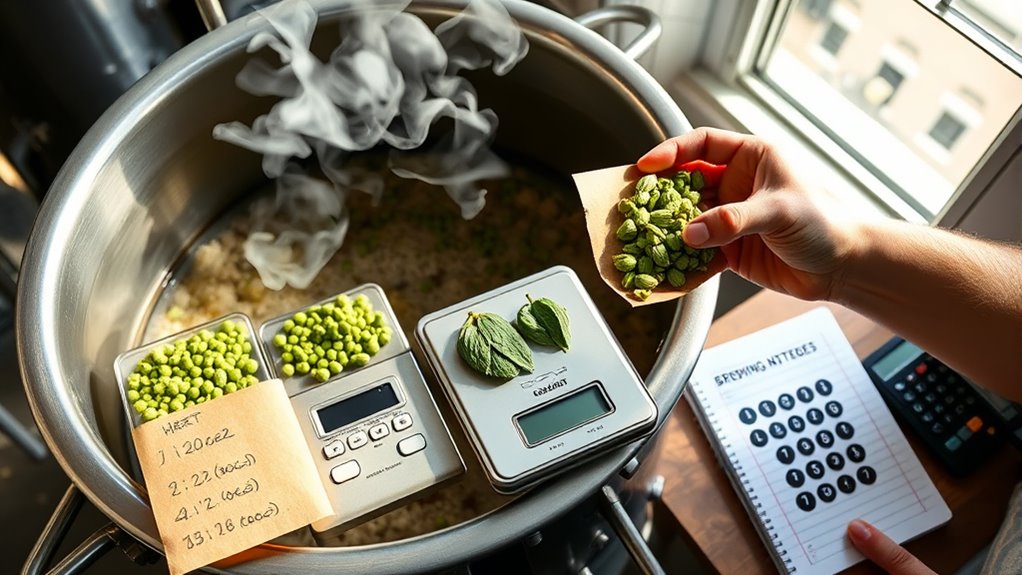
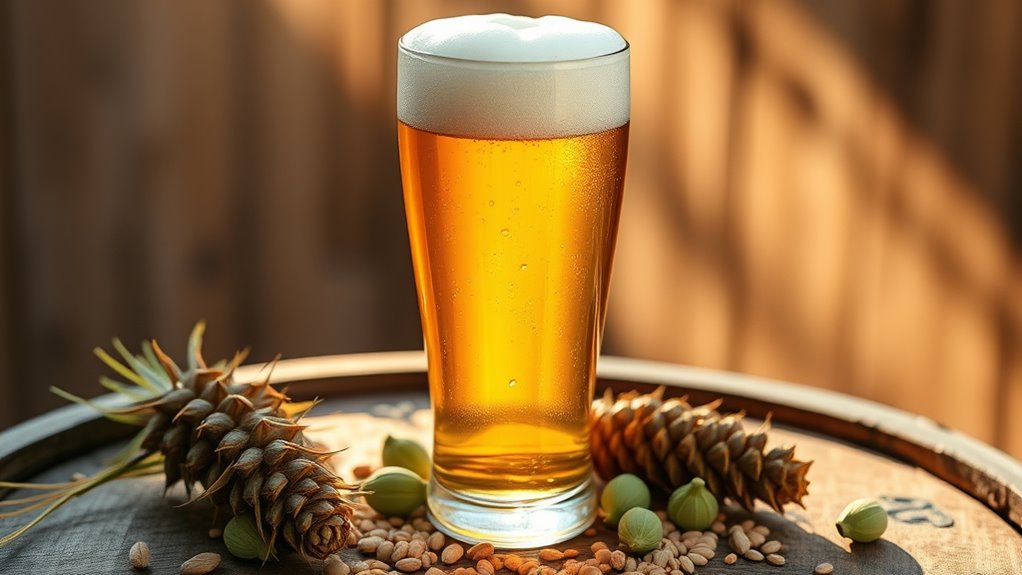
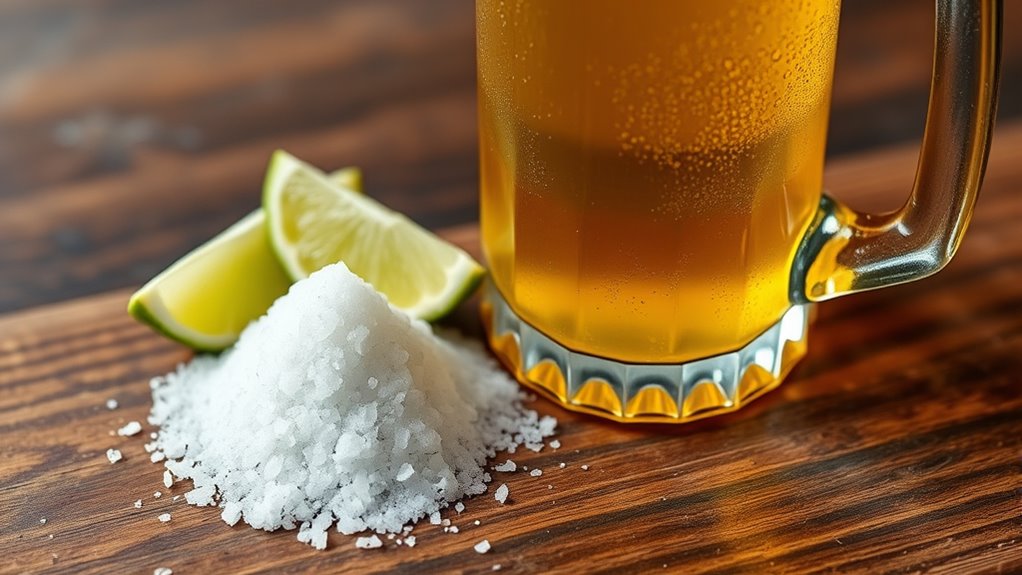
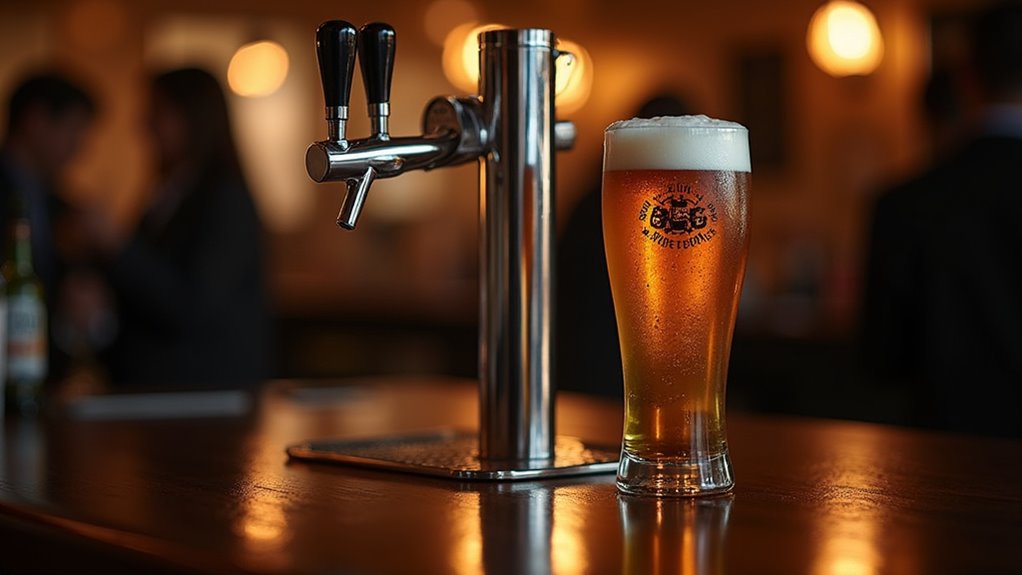
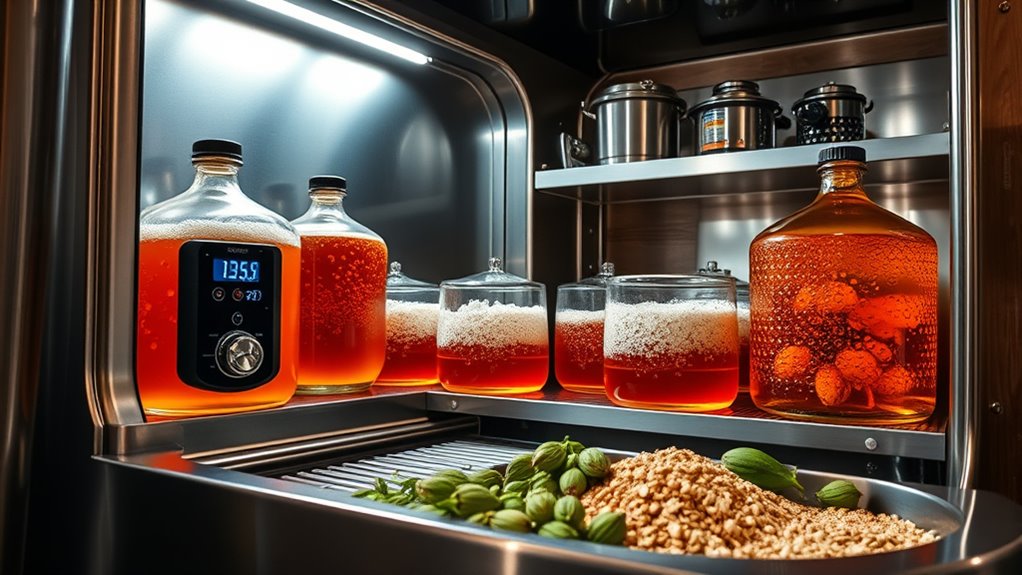
1 comment
Comments are closed.